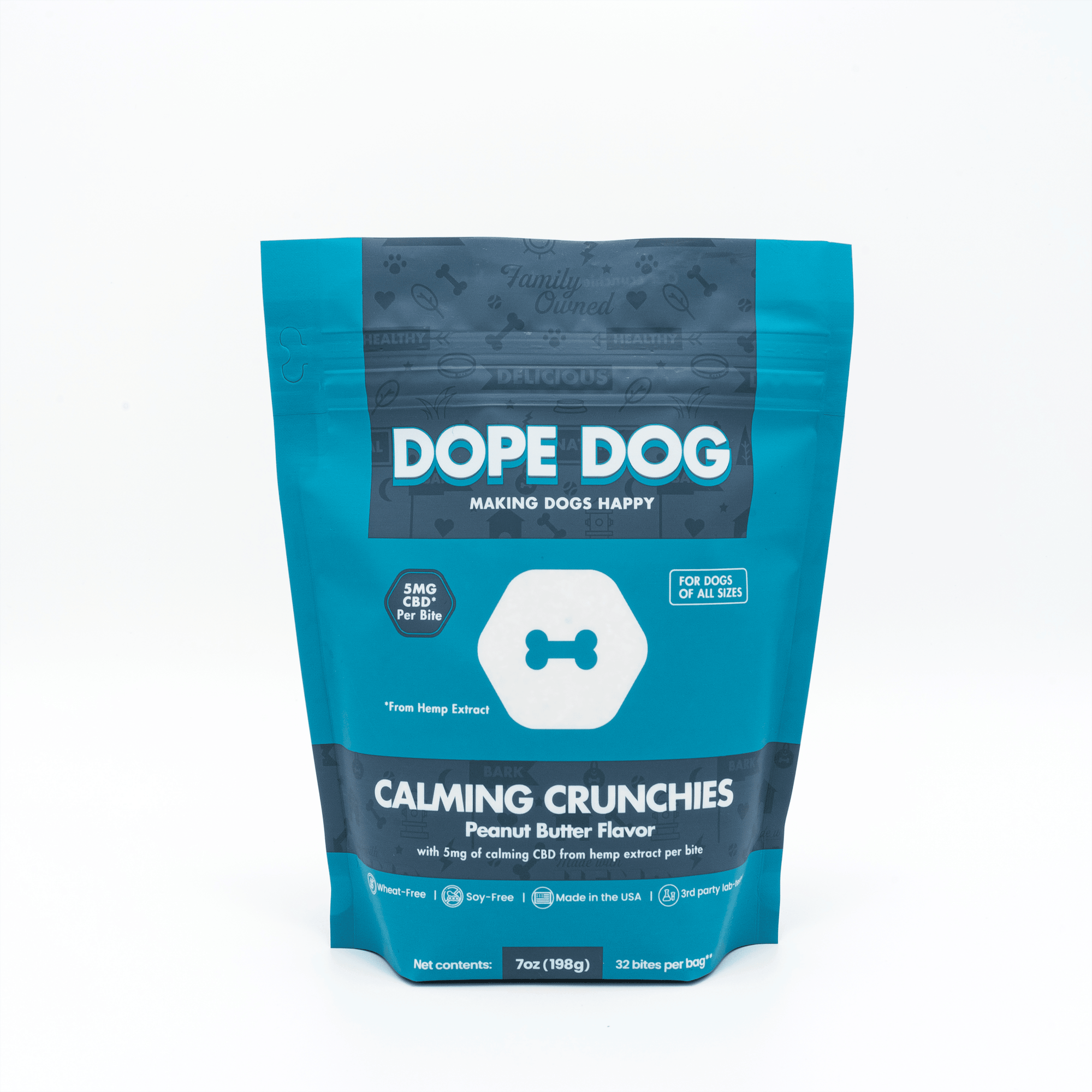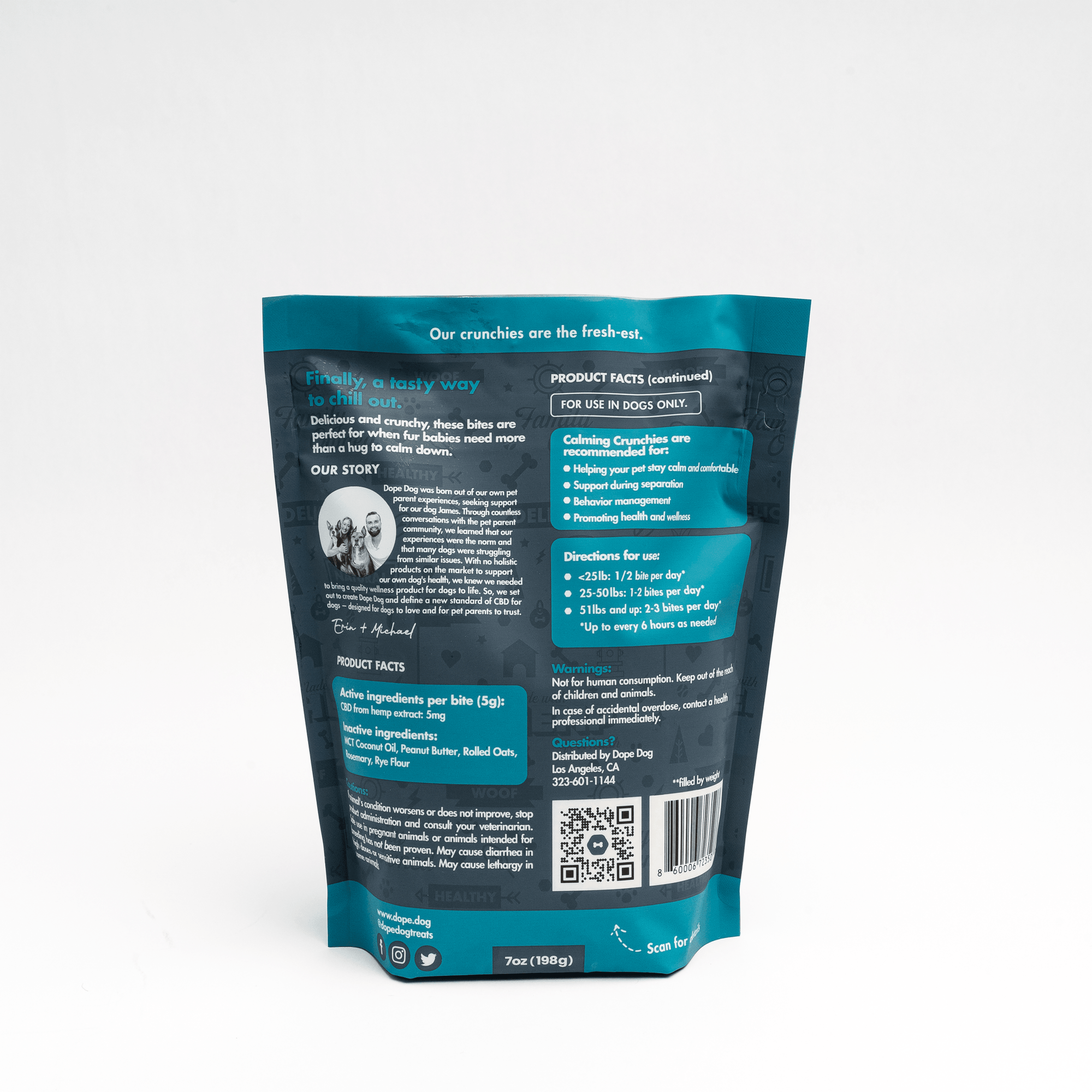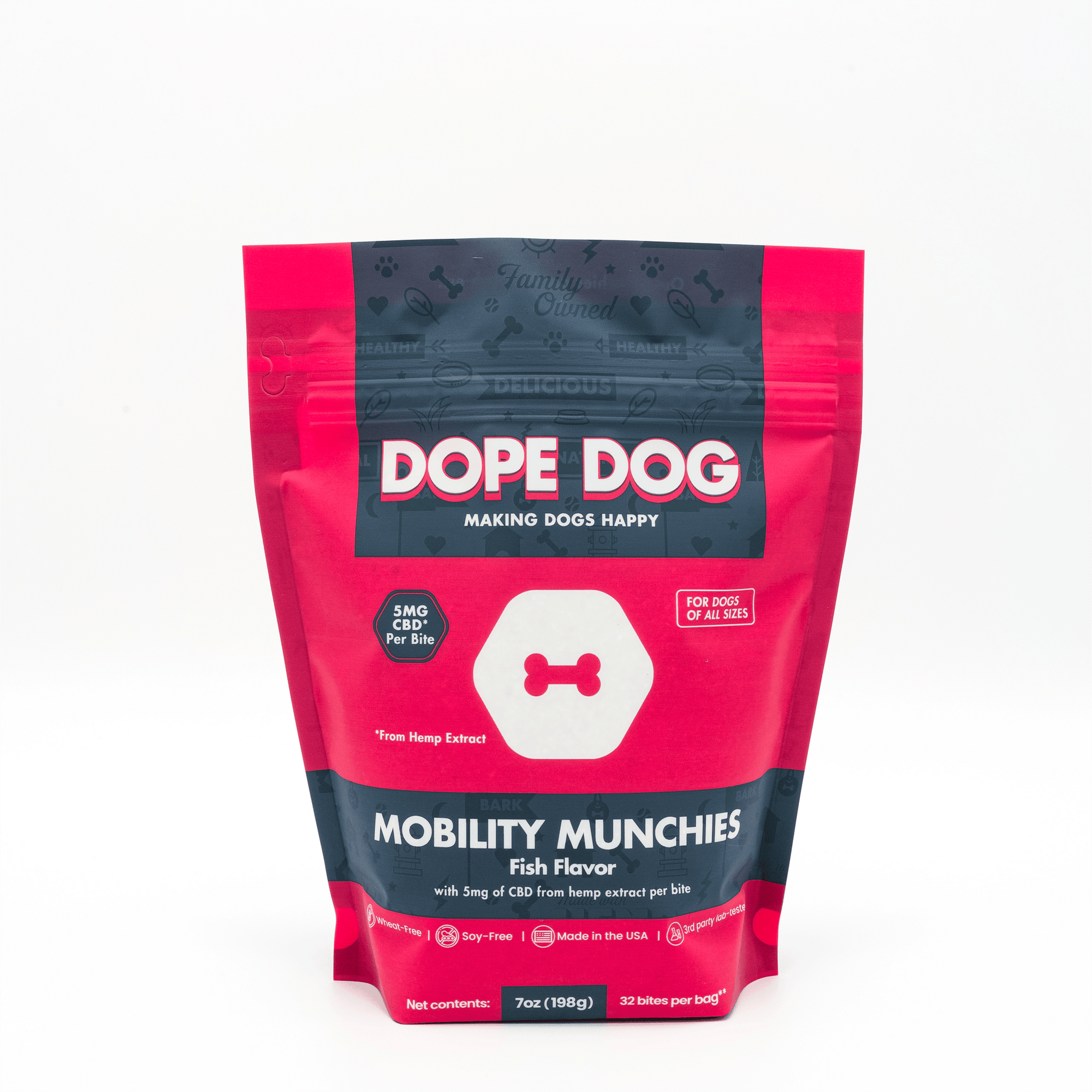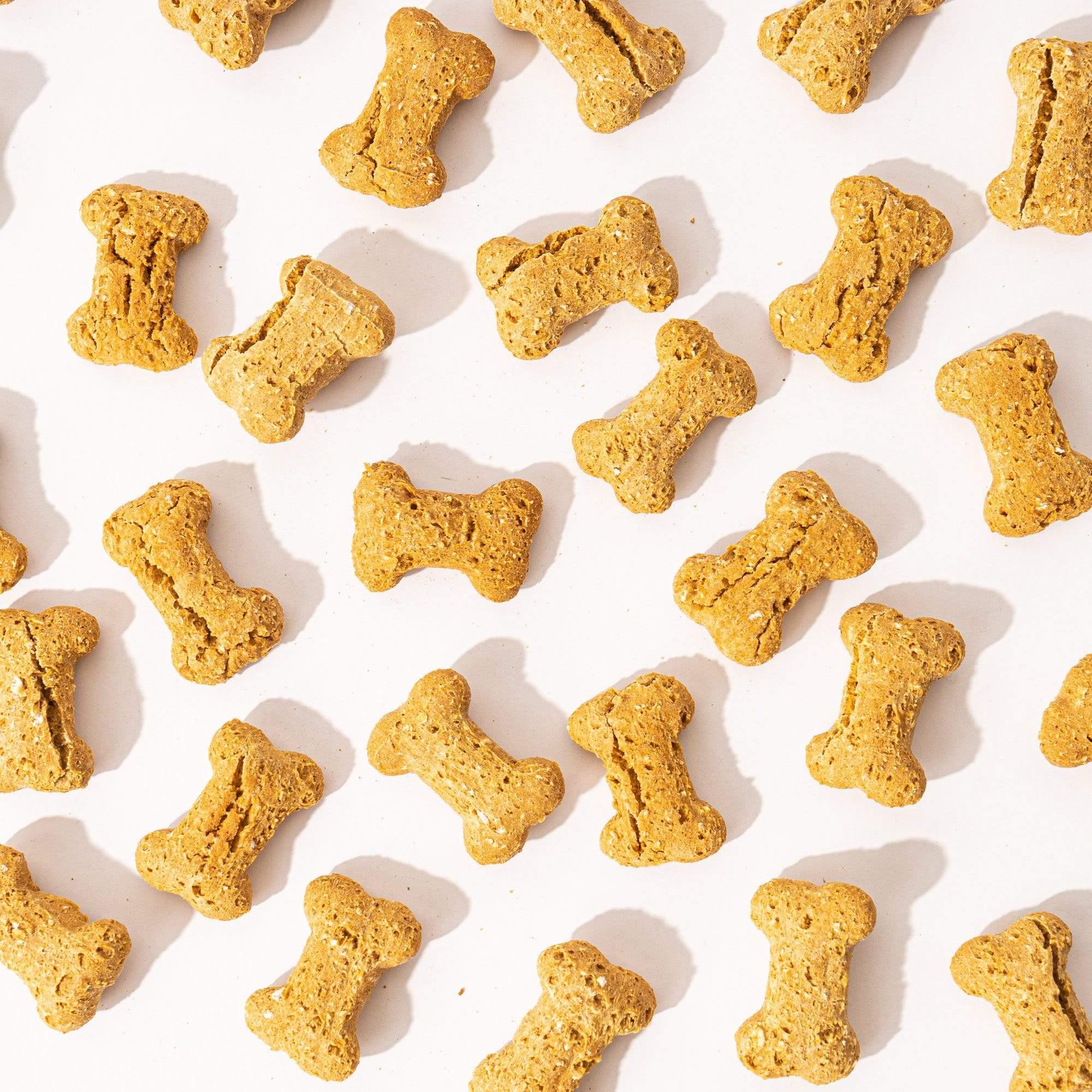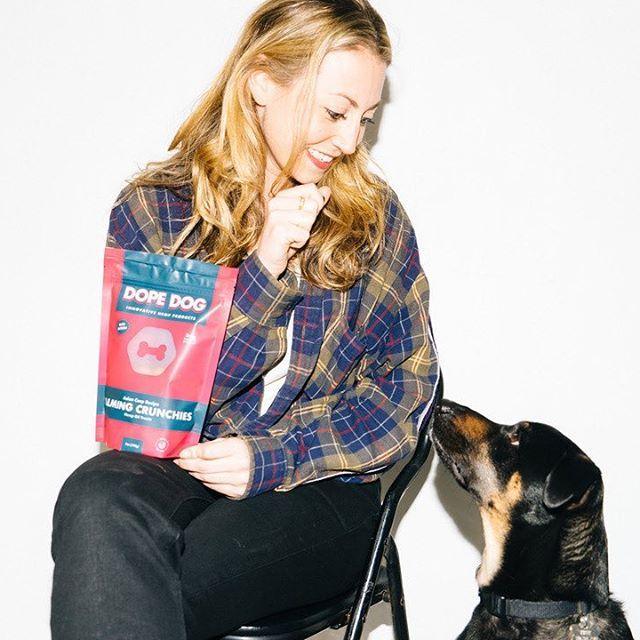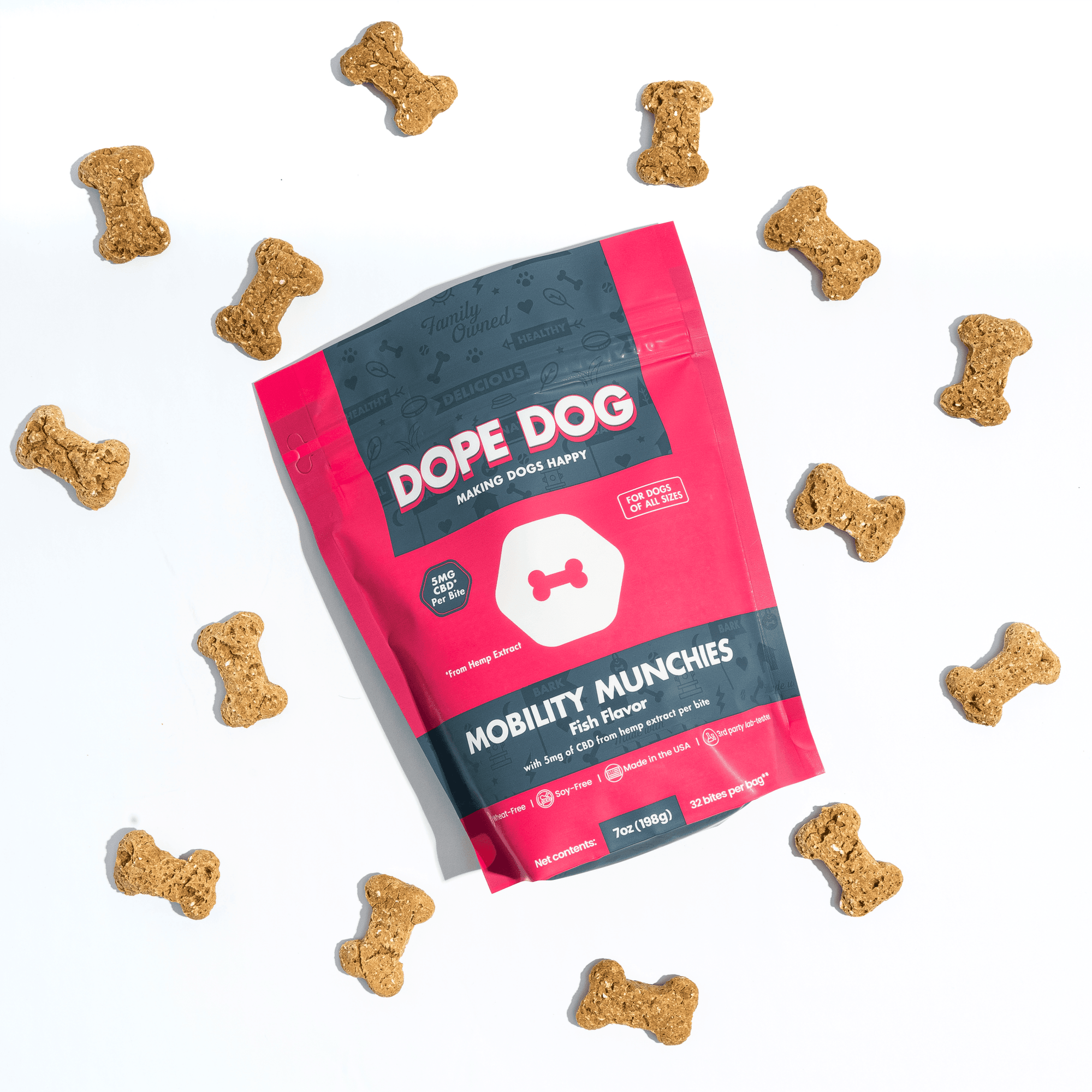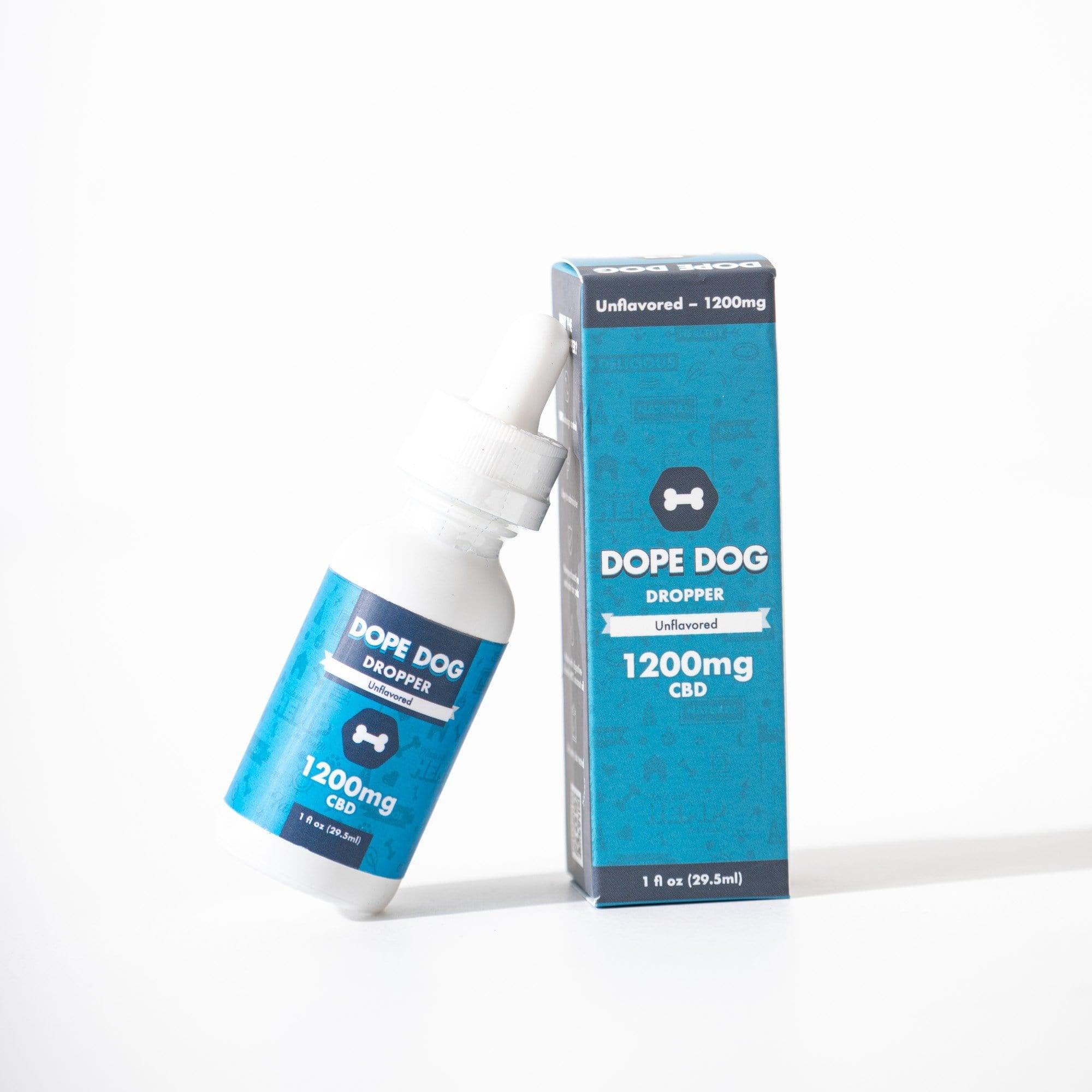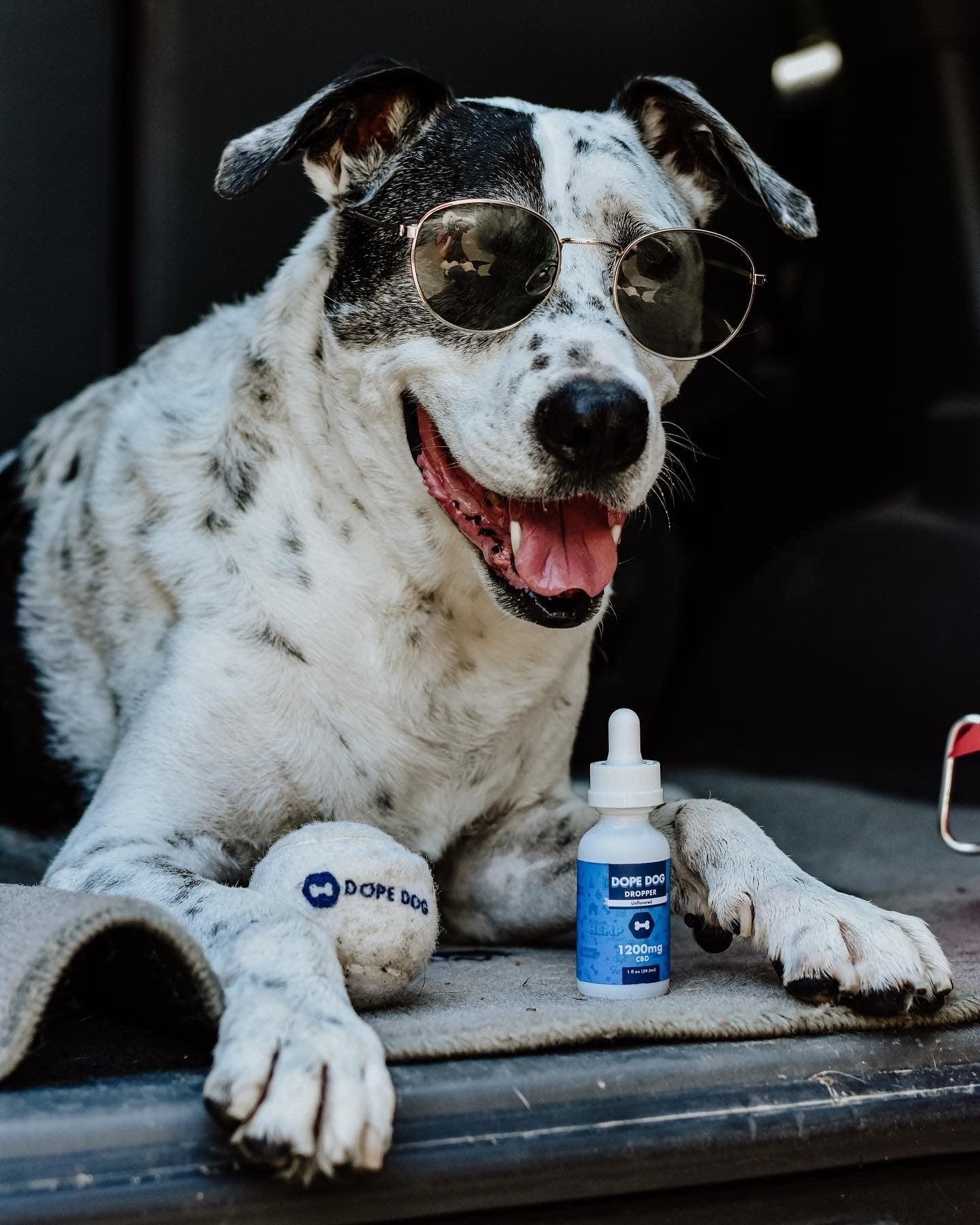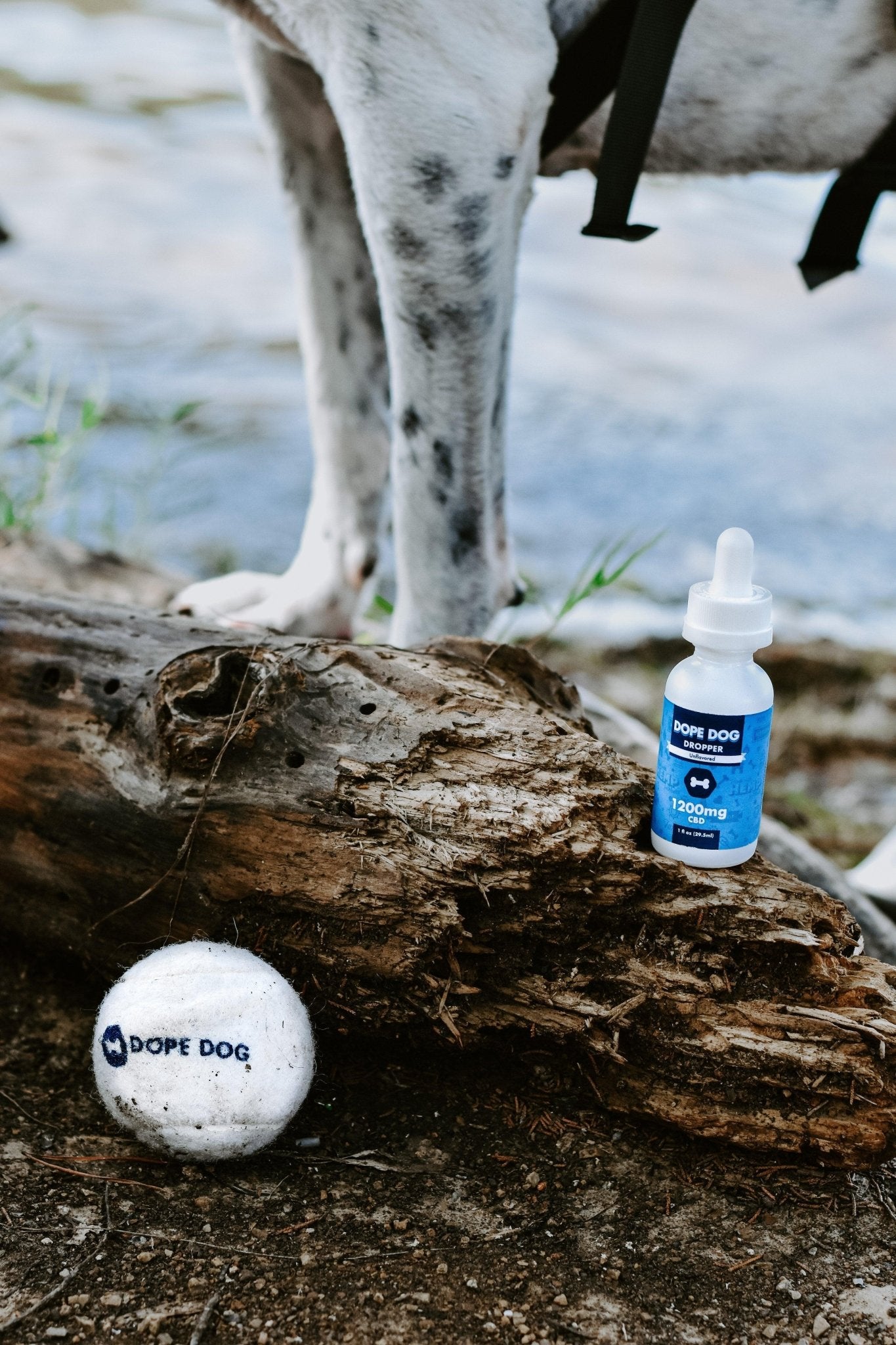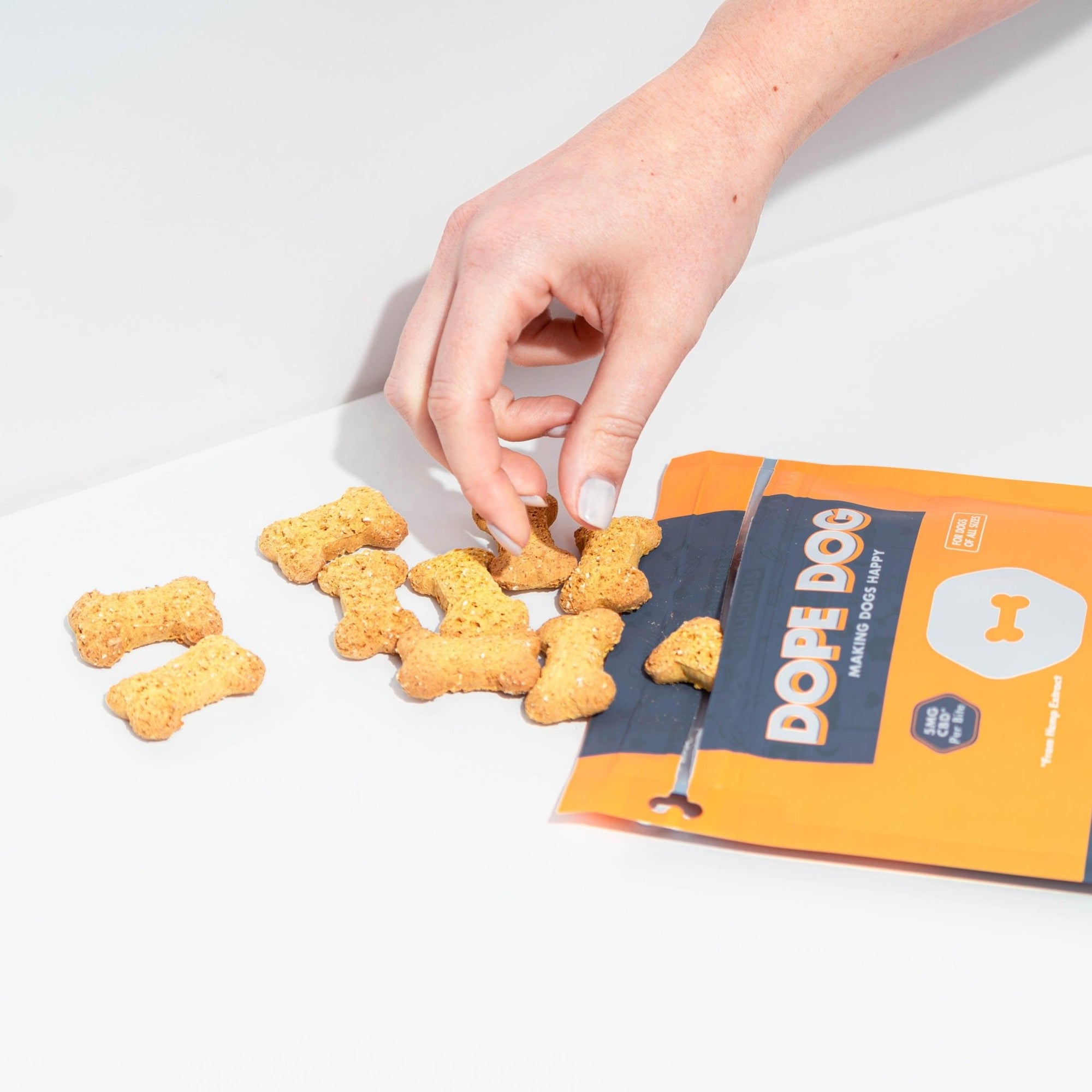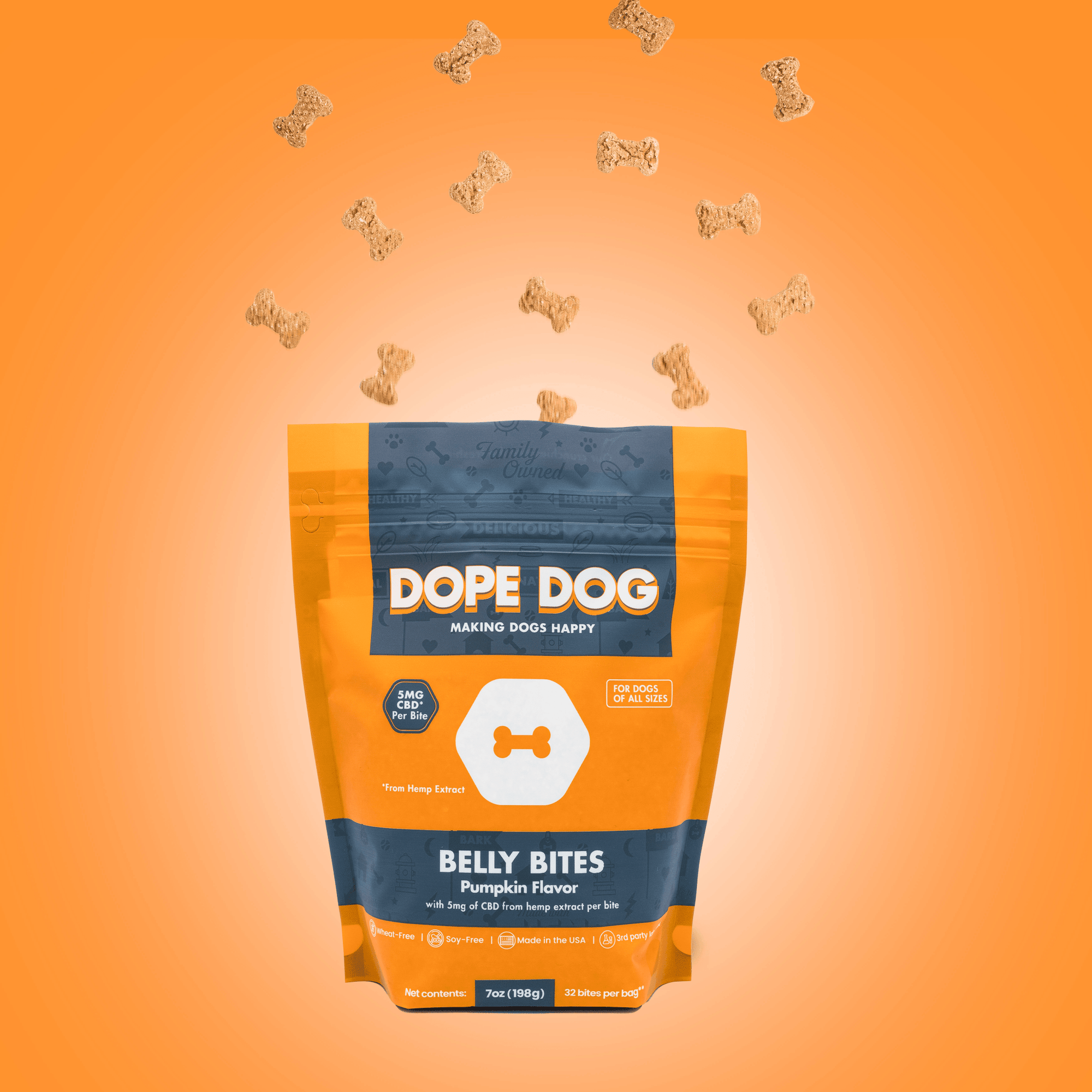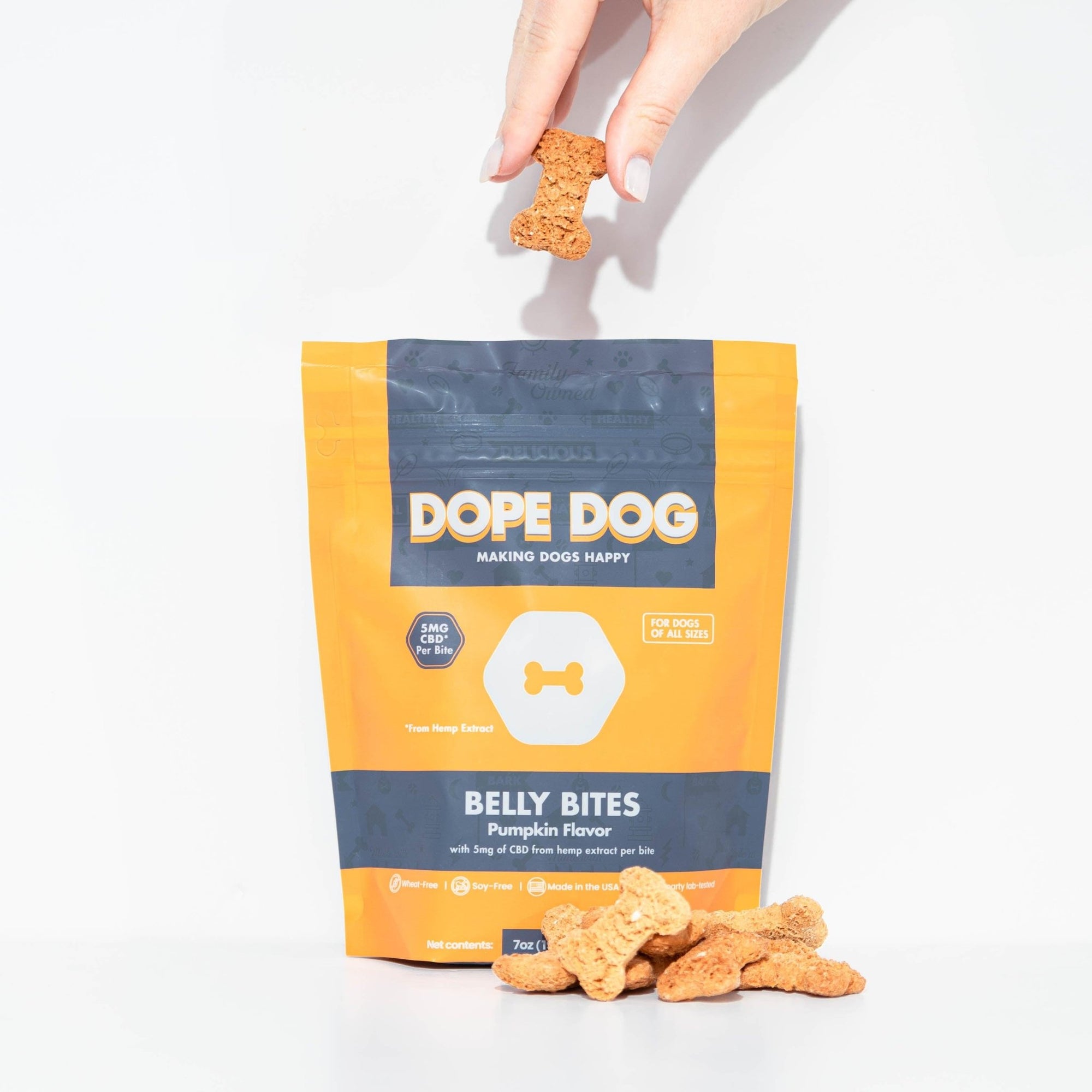We love our precious pups and want nothing more than to keep them happy, safe, and content. However, this can sometimes be tricky, especially if your dog is dealing with the effects of anxiety.
Discover common types of doggy anxiety and how to keep your furry friend calm and happy in any situation. Continue reading to learn more, and also feel free to check out Dope Dog, which offers a variety of CBD dog treats to help keep your pet calm and happy.
Related: 10 ways to help your nervous dog
Dog Anxiety Symptoms
Anxiety in dogs shows through various symptoms, including fidgeting, tucked tail, hiding, and avoidance of eye contact, among others. These can include:
- Pacing
- Trembling
- Whimpering/whining
- Excessive licking, salivating or drooling
- Dilated pupils
- Destructive behaviors
- Passive escape attempts
- Scratching at doors and windows
- Digging holes and chewing things up
- Avoiding interactions
- Excessive panting
- Displacement behaviors (shaking like their wet, lip licking, air sniffing, and yawning)
Dogs can exhibit one or more of these symptoms on occasion, and it’s normal when they are in an uncomfortable situation. However, it becomes problematic when they exhibit many symptoms at once or to an extreme degree.
The Common Sources of Dog Anxiety Owners Need to Know About

While dogs can become anxious for a wide range of reasons, the four most common ones tend to include separation anxiety, illness-induced anxiety, rescue or former shelter anxiety, and generalized anxiety.
Separation Anxiety
Separation anxiety is prevalent in many dogs, especially certain breeds like German Shepherds, Border Collies, Jack Russel Terriers, and Labrador Retrievers. Dogs are highly social animals by nature and don’t like being alone.
Separation anxiety is often triggered by boredom and loneliness, and can also be linked to past negative experiences when left alone. Old-age-onset separation anxiety may develop over time as memory and cognitive comprehension decline in older dogs.
Rescue & Former Shelter Anxiety

Pets that have spent time in an animal shelter often carry bad memories of being abandoned by their owners. Many of them may also possess memories of neglect and abuse. Experiences in an unpredictable environment and lack of routine may cause dogs to develop a generally anxious demeanor.
Developing a consistent and predictable routine, along with a stable environment, helps rescue dogs feel safe and secure, reducing anxiety.
Generalized Anxiety
The dog's anxiety may have been triggered by a primary event that went unnoticed by owners or occurred before adoption. However, your dog may be prone to anxiety, leading to stress with changes in the environment or daily routine..
Generalized anxiety is quite common in dogs (especially in certain breeds, such as toy breeds, Cocker Spaniels, German & Australian Shepherds, Labrador Retrievers, Greyhounds, and others) and often goes unrecognized by their owners. This is usually because their anxiety symptoms are more subtle and aren’t perceived as abnormal.
Social Anxiety
Many dogs experience some level of social anxiety when around new people or dogs, especially if they haven’t been properly socialized to be around others. Dogs with this anxiety may bark, lunge, or display aggression around unfamiliar pets or people.
To help them overcome the issue, start by introducing them to new people and dogs one at a time, and allow the dog to initiate contact in their own time. Also, Ensure your dog has a safe retreat when anxious. Take things slow, reward good behavior, and provide calm reassurance.
Storm Anxiety
Storm anxiety is yet another common condition that dogs may exhibit, and it’s often connected to a general fear of loud noises (such as fireworks). Most common in dogs aged two to four, this anxiety involves whining, hiding, scratching, slobbering, pacing, trembling, and sheer panic.
Owners can also help their dogs become desensitized to the sound of thunder between actual storms by downloading and playing thunderstorm sounds while giving them treats for staying calm.
Car Anxiety

While many dogs love riding in cars and look forward to sticking their head out the open window during a drive to take in all of the curious new scents of the world, many dogs experience intense anxiety and outright dread when it comes to car rides. Dogs with car anxiety will often wine, bark, tremble, and sometimes even vomit or have accidents in the car due to their fear and stress. Said factors include the fear of being trapped in a large, moving machine, motion sickness, previous bad encounters inside a car (such as an accident), and more.
Related: Why is My Dog Rubbing His Face On The Floor?
Desensitization & Doggy Car Anxiety
Dogs can be trained to associate the car with something good by using the process of desensitization and counter-conditioning. Desensitization is a method that gradually introduces your dog to the car. Counter conditioning involves changing the dog’s emotional response from a negative experience to a more positive feeling about being inside the vehicle.
It depends on how the dog reacts, but you might have to teach him to ride in the car starting 10 feet away while the vehicle is parked in the driveway. The best thing to do is to start with the backseat.
Move the dog closer once he becomes more relaxed. If the dog stops eating or playing, it means you are moving too fast. If that is the case, then take a step back until your four-legged friend relaxes again.
Once the dog is in the car, turn the car on and off, but don’t go anywhere. Just let your companion associate the sound of the engine with something fun.
Is your dog anxious? Check out Dope Dog for CBD dog treats.
Preventing Motion Sickness
Puppies are more likely than adult dogs to get carsick, but many of them grow out of it as they mature. For those who don’t, here are some tips to help reduce nausea, vomiting, and stomach upsets:
- Lower the window for fresh air.
- Keep the temperature cool.
- Ask the vet about anti-anxiety medication or motion sickness meds.
- Give your companions food and water a few hours before the trip.
- Exercise the dog for about 20 minutes before the car ride.
- Spray dog pheromones in the car that mimics the odor of a nursing mother dog to calm the adult dog.
- Use CBD dog treats from Dope Dog to help relax them and reduce nausea and vomiting.
Check out Dope Dog for CBD dog treats to help your companion relax.
Related: Keeping dogs calm during fireworks
Overcoming Anxiety: Helping Your Dog Feel Comfortable

Take Them for a Walk
Begin the day by going for a brisk walk with your dog, and make sure it is a rigorous one that will enable them to burn off some energy. Once you get home, you can reward your dog with water, food, and maybe a small treat. This tip helps keep your dog calm and relaxed, especially when you're away or on a car ride later.
Make Your Dog Comfortable
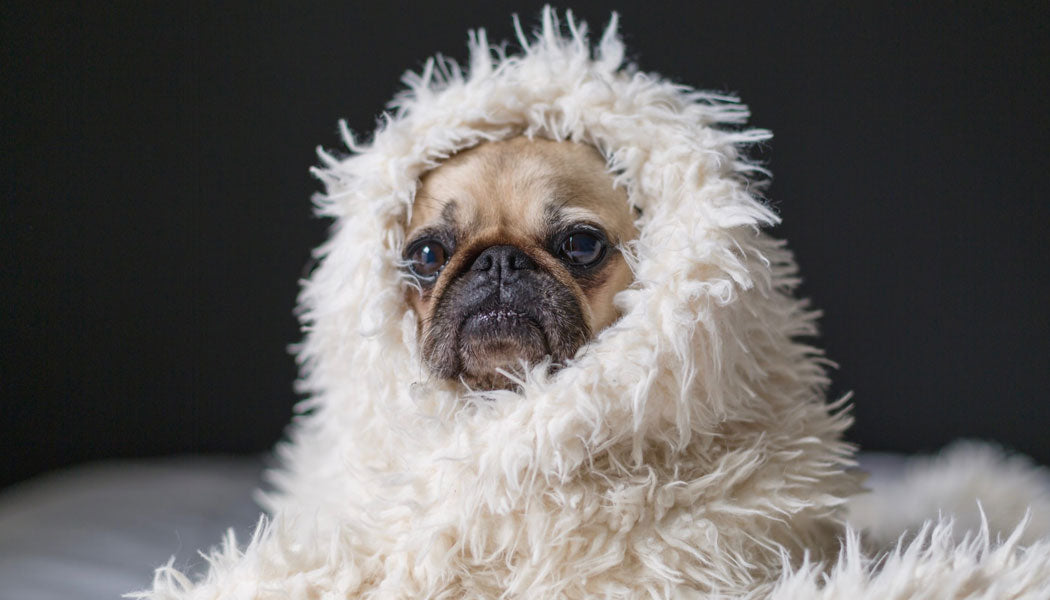
Items that have your scent can help your dog relax and remember that you will be returning home if they have separation anxiety, but can also help calm down other anxiety by allowing them to feel safe. Additionally, if there are any items that your dog doesn’t like, for example, their collar, make sure they are removed and out of eyesight so that your dog does not start to stress out because of them.
Give Them a Safe Place
Do you sleep with your dog? If so, this is something you should try to stop to help your dog with anxiety, especially if they exhibit signs of separation anxiety in particular. Get your dog a separate bed where you can give them calming treats and pet them. It is essential to teach your dog to like being in his personal space, independent of you.
Related: Why is My Dog Not Eating But Drinking Water?
CBD Treats for Anxiety

The CBD market has developed considerably in the past few years, and there are now suppliers like Dope Dog that have designed CBD products specifically for dogs. These products have all been lab-tested to give you peace of mind when feeding them to your furry friend. They are proven to provide anxiety relief in a wide range of dogs, helping owners treat separation anxiety in particular so that they do not need to worry as much whenever they leave home. Try Dope Dog’s Calming Crunchies, delicious human-grade biscuits packed with 6mg of CBD each.
The CBD compound can react to your canine companion's brain receptor to release chemical signals to promote relaxation. This can help your dog feel calm and relaxed when faced with anxiety-inducing triggers or situations.
Related: Can Dogs Eat Pinto Beans?
Help Them Be More Independent
You should train your dog to be more independent to help them learn how to remain calm in uncomfortable situations, especially if they have separation anxiety. Start with small intervals to help them remain as calm as possible, and then work your way up to leaving them alone for more extended periods. You can start with five seconds and then keep working your way up over the next few weeks.
Stay Calm
Dog owners need to remain calm in anxiety-producing situations since dogs are so keyed into their emotions. Also, for dogs with separation anxiety, owners must endeavor not to get emotional when leaving their dog for the day and try not to get too overexcited when they return home.
Change Your Routine
Another tip for dealing with separation anxiety in your dog is actively changing your “going away” signals. You could also try using a different door each day. The aim here is to break your dog’s connection between these actions with you departing the property.
Give Them Love
Ultimately, it’s essential to have patience and show support for your dog during scary or uncertain times when their anxiety may be triggered, no matter what their source of stress is. Do not scold or punish them for abnormal behavior, especially if their anxiety is being triggered by something like a storm or fireworks. Their behavior during these times is likely due to extreme feelings of fear, not disobedience or a desire to act out.
Related: Best Dope Dog Collars 2023
Conclusion
Whether your dog is anxious due to separation, a storm, car rides, or interacting socially with new pets and people, it’s the responsibility of loving dog owners to do their part to help their pets feel as safe and comfortable as possible. Fortunately, there are various tips and tricks to help alleviate your dog’s anxiety, no matter the cause.
CBD dog treats from Dope Dog can help your canine companion relax during times of anxiety. Other strategies like taking them somewhere fun, having their favorite treats and toys on hand, and slowly desensitizing them from their anxiety triggers can help.
Want to help your dog relax? Check out Dope Dog for CBD dog treats.

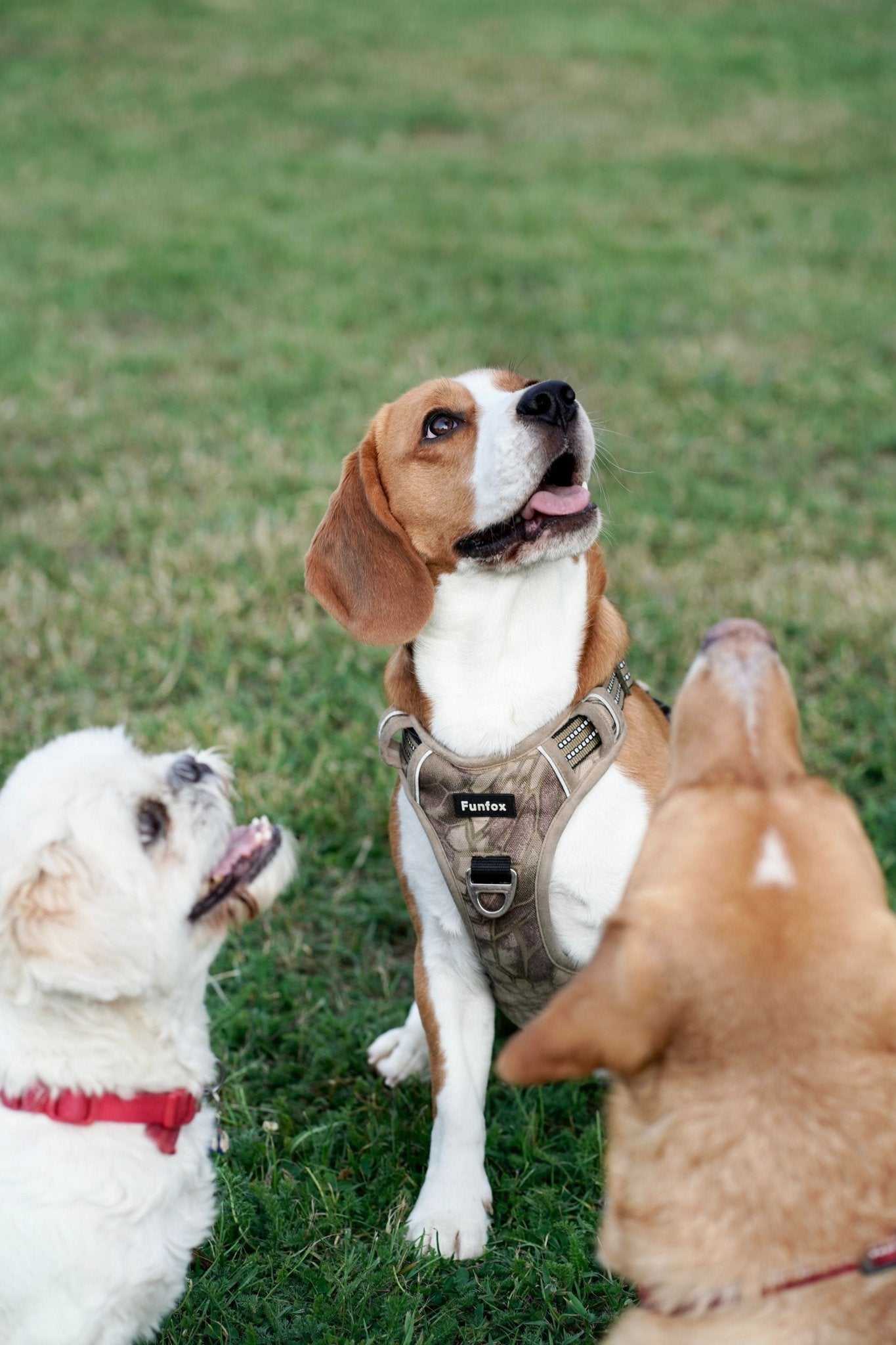
![Why is My Dog's Ear Swollen? [MUST KNOW!]](http://dope.dog/cdn/shop/articles/tim-higham-QxDXORRktWE-unsplash-555717.jpg?v=1697236049&width=1536)
